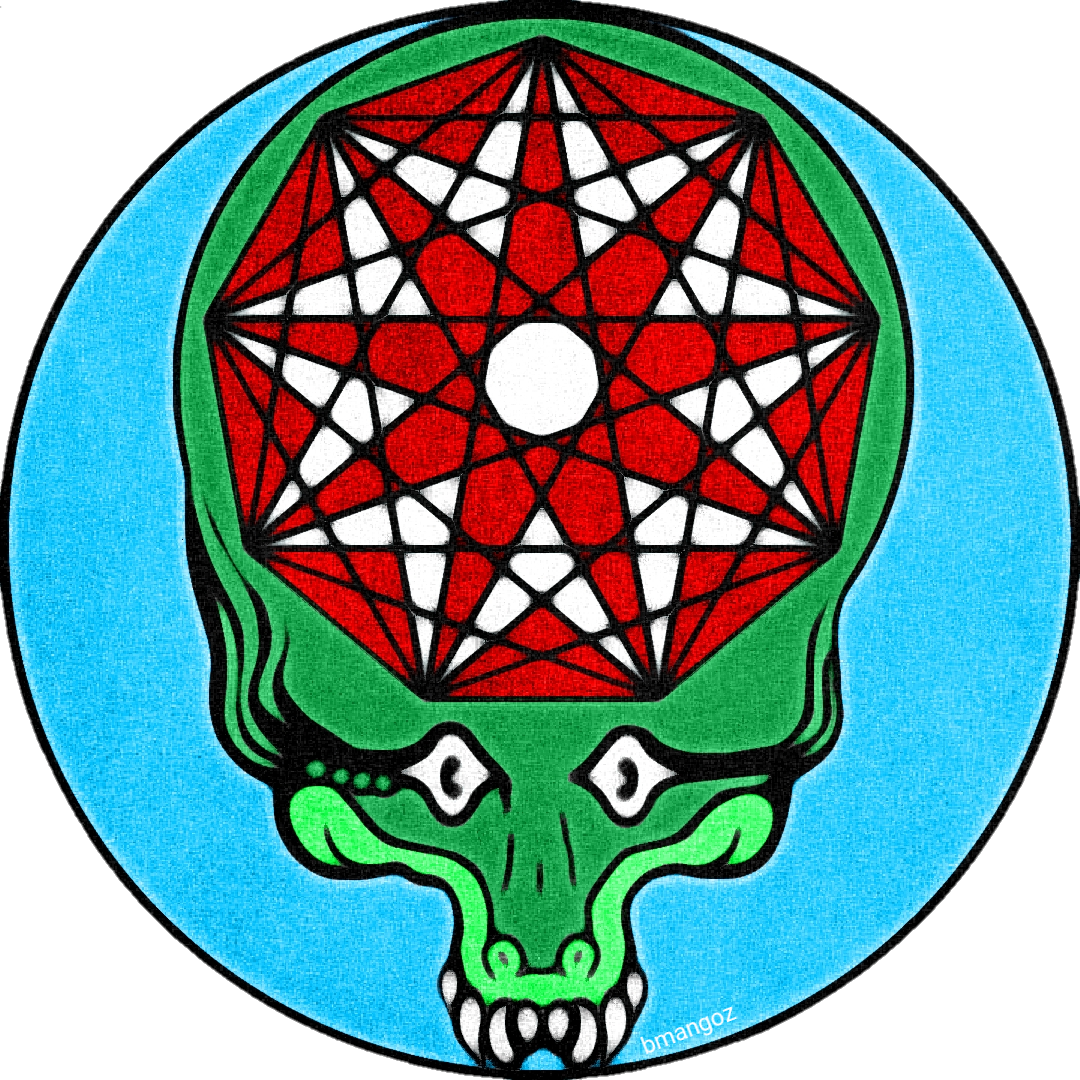Warning: strong opinions incoming
Imagine that tonight I sit down at my computer and write an original story about the Norse gods in which Freyr murders Odin and becomes the new chief god. I then publish this story online, making it available to the world. The next day I find a place online where experts are discussing Norse mythology. One of them mentions that Odin is the chief god and I correct him: “This is only true up until the point where he is murdered by Freyr,” I say. The expert responds, “that doesn’t happen in Norse mythology,” to which I reply, “Sure it does. Here’s a link to the new myth I wrote last night.”
Most of us will have a gut reaction that things don’t work this way. I can’t just write an original story and call it authentic Norse mythology. But why is that? After all, every myth was invented by somebody. Is it because my story isn’t old enough? Because I’m not a credentialed expert? Because I’m not a native Scandinavian? Because I’m not a practitioner of ancient Norse paganism? Because allowing everyone to do this would result in a chaotic, contradictory mess?
Well, mythology is already a chaotic, contradictory mess.
The stories that have survived into modern times survived only because they were written down by Christians who still remembered them centuries after the old religion had been replaced. Prior to this, they were passed down orally from generation to generation, evolving and changing continually over thousands of miles and several millennia, and taking on some plot holes in the process.
For this reason, there is no official mythological canon, and indeed there never was. However, what we do find in the surviving material are common themes and motifs that we know from their wide range of use were important enough to persist and reoccur, sometimes throughout the Germanic-speaking world as a whole.
Within that world, myths were frequently modified and sometimes even invented, perhaps by poets or prophetic individuals, or by any number of other potential means. Unique innovations probably even arose within families. And when circumstances were favorable, new ideas would spread. Presumably, a new idea would be most easily adopted by others if it fell inline with their cultural and religious expectations at the time, or in other words, because it properly applied implicitly understood themes and motifs. If a practicing pagan poet from Norway were to visit Iceland in 900 A.D., bringing with him a new tale about some mischief the gods got up to, surely there would be a much higher chance that his story would be adopted by Icelanders than if I were to time travel to 900 A.D. and attempt the same thing.
This is because I’m an outsider and have only a surface-level understanding of ancient Norse religion and culture. (Only a surface-level amount of information survives.) There’s a good chance that any story I invent won’t “sit right” with ancient Norse pagans because my characters won’t adhere to proper behavioral expectations or because I’ve misunderstood or misapplied some widely-held, long-standing principle in a way that appears nonsensical or even just “off” in some way to native practitioners. As an outsider to the belief system, I don’t have the knowledge (or dare I say, the right) to modify that belief system. This is ultimately why any new myth I invent will not, and should not, be accepted as authentic Norse mythology: I’m not an ancient Norse person.
With that in mind, who has the right to update ancient mythology? For the most part, the answer ought to be the same: no one alive today can make authentic changes to information beyond how it is recorded in our source material (though this is a bit different from attempts to properly interpret what has been recorded). And this is the trick when it comes to retellings.
The most entertaining version of a story by modern sensibilities will often be the one that has embellished the most details and deviated the farthest from surviving source material. Marvel comics would fit into this category. But if the desire is to learn actual mythology, a retelling will typically be a less-effective tool than a good translation of the sources it derives from.
In my opinion, an ideal retelling would use some kind of system (maybe footnotes?) to call out all of the embellishments and interpretations it has made, justify why they were made, and explain why each one is believed to fit within the cultural and religious sensibilities of ancient Norse society. This may seem like an unreasonable request, until we look at the ways in which popular retellings (I’m lookin’ at you, Neil) have negatively impacted the average person’s understanding of Norse mythology. Such retellings have perpetuated the incorrect notions that jötnar are a gigantic class of beings, that Thor is an unintelligent individual, that Fenrir was an innocent puppy who just wanted friends, and that Odin is trying to prevent Ragnarok, just to name a few. Had authors been required to justify and explain these sorts of embellishments, they would likely never have seen the light of day.
Ultimately, retellings can serve to provide a cursory overview of major gods and myths. But at the point where a person becomes serious enough to become a student of the mythology (or interested enough to explain what they’ve learned to anyone else!), there will inevitably be a good bit of un-learning of incorrect, inauthentic information that will have to occur in order to prevent spreading it. This is even more true if a person’s interest was piqued by video games like “God of War” or “Assassin’s Creed” whose development teams “did a lot of research” only to ignore most of what they learned by the time the games were released in favor of making a buck.
This is why we are lucky to have the Faulkes translation of the Prose Edda and the Pettit translation of the Poetic Edda. Both are gold-standard translations of source material, both are highly accessible to modern audiences in style, and both are freely available for download. If you’re looking for access to authentic mythology, you might as well skip the retellings altogether.
…unless you can find one with extensive footnotes and citations :)
A very important yhing to keep in mind when enjoying retellings. However, retellings are still very fun, and should be enjoyed nonetheless.
I truly believe that there is room for both. You even mention yourself that the myths themselves as we know them are retellings. There is no single definitive Norse person and even the concept of Norse is a loose definition given the large scale of time and culture that are identified as Norse.
Stories like the Iliad, for instance, are echoes of other stories, that are then reinvented at the time of their inception, and then reinvented during successive generations until it becomes solidified, old, traditional. Reinvigorating those stories in a context for our generation is the exact thing that was done when these stories were born and should be applauded.
Consider that Aphrodite was more than likely a Middle Eastern deity whose name was given a Greek meaning after her adoption, disregarding any previous meaning. She then is no longer that old deity, but a new Greek one with echoes of the old, much like Marvel Comics. Marvel is American myth not Norse. Consider that even the movies are a reinvention of prior established myth that many old hat comic fans decry. They say, “It didn’t happen like that in the comics!!”, much to the consternation of everyone else involved.
That being said an understanding of the snapshots that we have in context is a laudable goal. There is so much disinformation out there and reinvented stories can muddy the water and cause exactly the confusion that you are talking about. If your goal is to understand the Norse and their religion don’t rely on a retelling, but even scholars end up with a smooshed together version that doesn’t represent the many smaller pockets that made up the whole. Imagine someone explaining Christianity in 3045 mixing elements of Catholicism and the many Protestant groups together. They have similar themes and motifs but are different on a fundamental level despite their many fundamental similarities.
Ultimately, we attack new story tellers for their innovation on old ideas while holding the old story tellers up for theirs, I believe that we are missing the point of telling them to begin with. Namely, a way to describe the human condition in a context for the people telling the stories and the societies within which they live.
…This is merely my poorly formatted opinion. I appreciate the insight and knowledge that you share and look forward to reading more!!!



